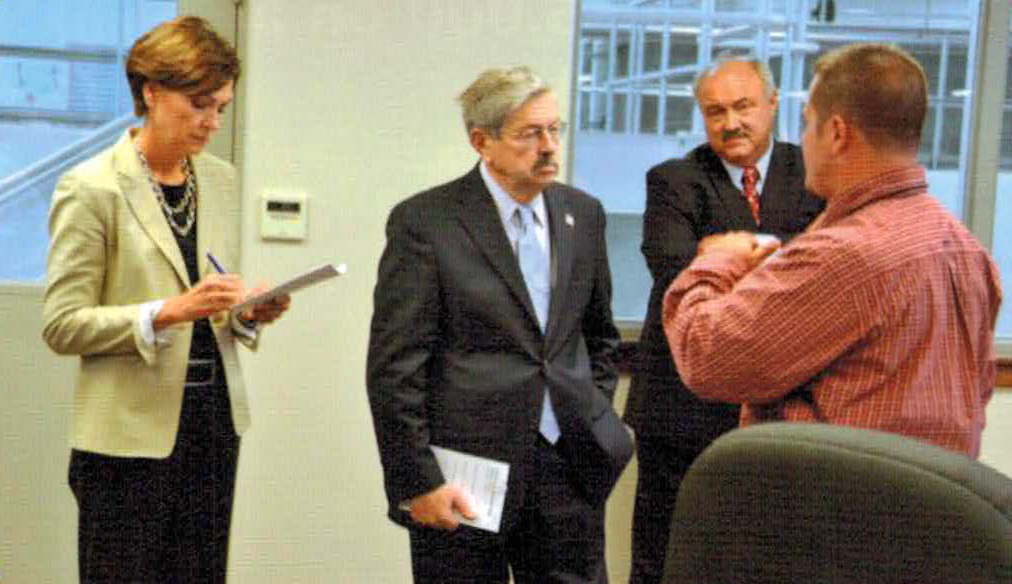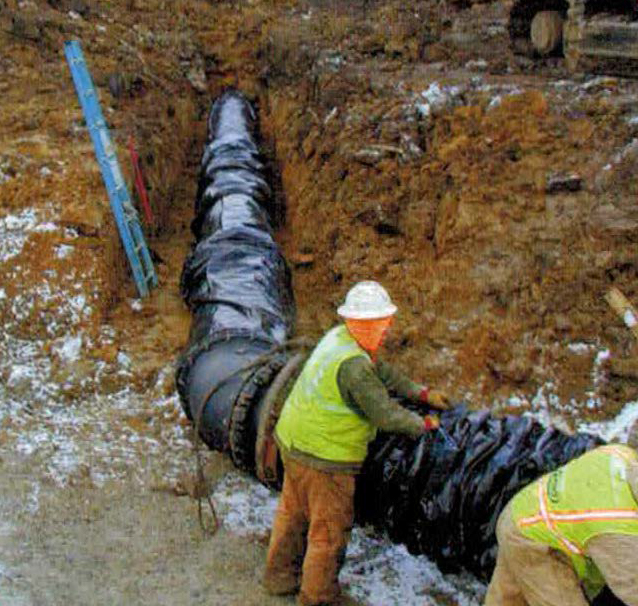ADDRESSING SOUTHEAST IOWA'S WATER NEEDS
In 1968, a group of farm and community leaders from Appanoose, Lucas, Monroe, and Wayne Counties came together to address the need for a reliable supply of quality drinking water for rural residents and small towns in southeast Iowa. Four years later, the effort of these local leaders together with support from state and federal agencies led to the organization of Rathbun Regional Water Association (RRWA) as a member-based nonprofit corporation. Soon after RRWA was organized, plans were underway for a water treatment plant and distribution system. Construction on RRWA's first water treatment plant began in 1975. While RRWA's treatment plant was under construction, the Association began to serve its member-customers through a newly installed distribution system with water purchased from the Cities of Albia, Centerville, Chariton, Corydon, and Humeston. RRWA's first water treatment plant was completed and started supplying water to the Association's customers in 1977. This first plant had a capacity to produce 4 million gallons per day (MGD) of drinking water. Rathbun Lake was the source of raw water for RRWA's treatment plant.
Over the next two decades, the demand for reliable, quality drinking water increased across southeast Iowa. In response to this demand, RRWA expanded its service territory and the number of Association member-customers grew. In addition to serving water to a growing number of rural residents and farm operations, RRWA also began to supply water to meet the needs of residents, businesses, and facilities in many small communities. In 2000, RRWA completed an expansion of the Association's original water treatment plant to satisfy the increased demand for water from rural customers and communities. RRWA's expanded plant had the capacity to treat as much as 8 MGD of water from Rathbun Lake. The Association constructed elevated water storage tanks, booster pump stations, and pipelines across its expanding service territory. In addition, RRWA entered into agreements with the Cities of Burlington, Fairfield, Fort Madison, Keokuk, and Mount Pleasant to purchase water for distribution to customers in the easternmost portion of the Association's service territory. RRWA has also been called upon to help address community wastewater treatment needs in the Association's service territory. RRWA currently owns and operates wastewater treatment systems in nine small communities.

Lieutenant Governor Reynolds and Governor Branstad visit with RRWA CEO John Glenn and RRWA Plant Superintendent Jer Buckingham during dedication of RRWA's new water treatment plant.

Installation of one of RRWA’s new raw water transmission mains.
RRWA - Preparing for the Future
Today, RRWA is the largest rural water system in Iowa and one of the largest in the United States. RRWA supplies water to the rural areas in 18 counties and to 51 communities in Iowa and Missouri. RRWA delivers this water through an extensive distribution system which includes an estimated 7,000 miles of pipeline, 34 elevated water storage tanks, and 36 booster pump stations. More than 80,000 people who reside in these rural areas and communities receive quality drinking water each day served by RRWA. Farm and livestock operations as well as numerous other businesses, industries, and facilities across southeast Iowa depend on RRWA to deliver a dependable and abundant supply of water to meet their daily needs. In recent years, RRWA has continued to experience steady growth in the number of customers. This growth requires that RRWA's Board of Directors and staff continually plan and implement actions to meet the associated increase in demand for water.
In 2007, RRWA's Board of Directors and staff made the decision to once again expand the Association's water treatment capacity and make additional improvements to its distribution system. This decision was based on longterm planning which determined that the future drinking water needs of RRWA's member-customers could exceed 14 MGD. RRWA's Board and staff also believed that it was essential for the Association to be able to supply the quantity of potable water needed to support future economic development in its service territory. In preparing to meet this future demand for water, RRWA has invested close to $40 million in improvements to the Association's water treatment and distribution facilities since 2007. These improvements included a new water treatment plant with a production capacity of 6 MGD that is expandable to 9 MGD, an intake structure in Rathbun Lake with a capacity to supply 17.5 MGD of raw water, two raw water transmission mains between the new intake and water treatment plants, seven miles of distribution main, and a one-million gallon elevated water storage tank. In addition, RRWA is now undertaking a major renovation of the Association's original water treatment plant which is planned for completion in 2015 and will ensure the facility's continued operation for many years to come.